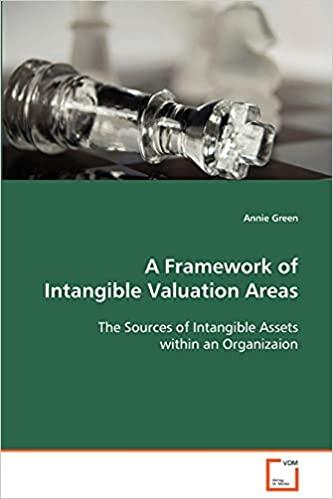Lucidea’s Lens: Knowledge Management Thought Leaders Part 23 – Annie Green

Stan Garfield

Annie Green is a knowledge strategist and architect who has led several KM initiatives. She helps individuals and organizations think and learn.
Her roles have included Associate Professorial Lecturer at The George Washington University, Knowledge Valuation Portfolio Editor for VINE Journal, a member of the International Institute on Knowledge and Innovation (IIKI), and an International Expert Reviewer for the Knowledge and Innovation Southeast Asia (IKI-SEA) Bangkok University Most Innovative Knowledge Enterprise (MIKE) Award.
Annie is an author, speaker, lecturer, journal reviewer, and a member of several brain trust/think tanks. She was the co-founder of the Knowledge Management Education Forum (KMEF), served as Chair of the Association for Intelligent Information Management KM Competencies team, and served as the chair of the International Conference on Intellectual Capital and Knowledge Management (ICICKM) 2013. She is the creator of the Framework of Intangible Valuation Areas (FIVA), a model that identifies intangible assets within the business structure
Annie created the Business Reasoning, Analytics, Intelligence Network (BRAIN), a model that identifies the components to establish artificial intelligence in the business enterprise structure. She has a Doctor of Science (D.Sc.) from George Washington University and a Masters in Information Systems (M.S.I.S) from George Mason University.
Her KM focus is on building an architecture that leverages data, intelligence, and knowledge to build a thinking organization. She has built a career on the effective and efficient operations of organizations. She prides herself on being an evangelist for individual and organizational thinking that leverages data, intelligence, and knowledge.
Profiles
Books
A Framework of Intangible Valuation Areas: The Sources of Intangible Assets within an Organization

In Search of Knowledge Management: Pursuing Primary Principles edited with Michael Stankosky and Linda Vandergriff
- Chapter 8: The Organizational Body Gets an Intelligent Brain
- Chapter 19: Driving Change Using Knowledge Management – Lessons Learned from an Unidentified Organization

Making it Real: Sustaining Knowledge Management
- Chapter 10: The Cognizant Organization

Other Content
Interviews
- Because You Need to Know – Pioneer Knowledge Services with Edwin K. Morris
- Convergence Conversation: Unpacking Knowledge Management with Deborah Westphal
KMWorld Conference
- 2010 Planting Seeds to Harvest Knowledge – Slides
- 2020 A401 – AI Landscape in KM with Tony Rhem
Article: A framework of intangible valuation areas (FIVA): Aligning business strategy and intangible assets with Julie J. C. H. Ryan
The combination of the value drivers of intangibles (alternatives) and the KM objectives (criteria) are modeled as depicted in Figure 3.

The FIVA model provides significant insight into the value components that contribute towards the achievement of a specific KM objective. The design of the FIVA model supports a dynamic mix of value components based on the business environment. FIVA is an initial step toward the development of a network and dynamic model to value and report intangible assets. FIVA leverages existing works to move the discipline of intangibles forward.
Conclusion
The FIVA represents a dynamic relationship between strategic objectives of KM and value drivers of intangible assets. FIVA provides a view of intangible assets within the context of the business enterprise and supports their valuation based on a common set of business dimensions. FIVA provides a concept of something familiar and similar to represent the complex business enterprise. It provides a systematic way to divide a business enterprise into its discrete activities. FIVA is a concept that could be used to examine the groupings of business activities and to establish boundaries that alignment with drivers of value, both tangible and intangible. FIVA incorporates intangible assets in the value chain of a business enterprise, which provides a first step to aligning intangible assets to value creation with its business strategy.
Today’s businesses are unaware if they have people, resources, or business processes in place to execute and succeed in their KM strategy. FIVA is a concept that allows a business to identify and link performance measurements/indicators to its intangible value drivers and subsequently capture measures to monitor and evaluate leading and lagging indicators in the achievement of its KM strategy. Understanding the value of its intangibles helps a business to develop, sustain and enhance its mission effectiveness and/or competitive advantage. FIVA provides a methodology to have command of and access to effective utilization of business resources and knowledge, which supports the business’s capability to implement cost and differentiation advantages.

Stan Garfield
Please enjoy Stan’s blog posts offering advice and insights drawn from many years as a KM practitioner. You may also want to download a free copy of his book, Lucidea’s Lens: Special Librarians & Information Specialists; The Five Cs of KM from Lucidea Press, and its precursor, Proven Practices for Implementing a Knowledge Management Program. And learn about Lucidea’s Presto, SydneyEnterprise, and GeniePlus software with unrivaled KM capabilities that enable successful knowledge curation and sharing.
Never miss another post. Subscribe today!
Similar Posts
Lucidea’s Lens: Knowledge Management Thought Leaders Part 79 – David Garvin
KM expert David Garvin was a proponent of organizational learning to counter unpredictability in market forces and technology advances.
Lucidea’s Lens: Knowledge Management Thought Leaders Part 78 – Carl Frappaolo
KM expert Carl Frappaolo was the creator of Delphi’s Knowledge Management Methodology (KM2)
Lucidea’s Lens: Knowledge Management Thought Leaders Part 77 – Leif Edvinsson
Leif Edvinsson, Professor Emeritus at Lund University in Sweden, specializes in Intellectual Capital Management of Enterprises, Cities, and Nations
Lucidea’s Lens: Knowledge Management Thought Leaders Part 76 – Seth Earley
Seth Earley works in cognitive computing, knowledge engineering, data management systems, taxonomy, ontology, and metadata governance strategies.

Leave a Comment
Comments are reviewed and must adhere to our comments policy.
0 Comments